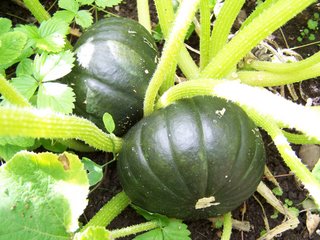Madrid
If you’re going to be in Spain in the rain, then Madrid is probably the best place to be. We (i.e., me and my Mum, Viv) landed at the award-winning and rather colourful Terminal 4 in rain, eventually discovered the remarkably cheap and efficient Metro, and very soon emerged above ground at Plaza de Cibeles, in rain, with a short walk to Hostal Gonzales, right in the middle of Madrid’s ‘Triangle of Art’. Several minutes later we re-emerged to mingle with the city’s evening crowds (of umbrellas) to discover what a bargain eating out in Madrid is, and that it generally seems a safe and friendly city.
Day one had to be the Prado, the whole Prado and nothing but the Prado. The experience of seeing such iconic works as ‘The Garden of Earthly Delights’ by Bosch, ‘Las Meninas’ by Velasquez, and ‘Third of May 1808’ by Goya was matched by discovering works like ‘The Descent’ by Roger van der Weyden, Breugel’s ‘Triumph of Death’, and Claude Lorraine’s ‘Embarkation of St Paula’. Velasquez and Goya both did astonishingly frank portraits of Spain’s royalty: big noses and chins, inbred prognathous jaws, piggy eyes, and secret clues to infidelity. El Greco came as a shock: impressionist paintwork, expressionist depth of feeling, mannerist composition.
Seeing this much art is hard work. Fortunately the café was surprisingly cheap, and free from people with carryingly posh voices, unlike some galleries I could mention…mind you, I wouldn’t have been able to understand them anyway.
The next day’s art, the Museo Thyssen-Bornemisza, is an eclectic mixture ranging from medieval to almost the present day. As well as several intriguingly cryptic medieval paintings, the works I noticed most were American landscapes by people such as Thomas Cole, and Frederick E. Church. In a way, painting the landscape seems part of colonising it. John Frederick Peto’s ‘Tom’s River’, and later the big super-realist paintings of street scenes, by Richard Estes, also caught my eye.
The companion museum, the Carmen Thyssen Collection, was created by his wife, and is rather more of a ‘one-of-everything’ collection. It is strong on landscapes, and it was interesting seeing some Canalettos of places in Italy I’ve been to. There were some interesting 20th century works by Emil Nolde, Kandinsky, Dufy and Vlaminck.
We spent most of the day in the gallery, but had enough time in the late afternoon to visit the Botanic Gardens. It’s not the best time to visit gardens, but they had some splendid bonsai trees, great cacti, lots of beds of Spanish plants not in flower – and a fascinating temporary exhibition of new Spanish architecture.
The third of Madrid’s big three art galleries is the Centro de Arte Reina Sofia, named after the current Queen. It has the most recent coverage of the three, from the early 20th century to the present day. The crowd-pulling painting here is Guernica, helpfully exhibited with enough space to study it at depth, and with a range of Picasso’s working drawings and preparatory paintings, so his working changes could be seen. Even a familiar painting such as this tells a huge amount more when you get the chance to see it in real life, as it were.
Other landmark paintings included cubist Picassos and Braques, demonstrating how they exchanged ideas in a way which might be seen to be unacceptable copying now. Juan Gris stayed with cubism longer than either though, and produced the most pleasing work. The surrealist works I find hard to take seriously, but seeing the development of Salvador Dalí was intriguing.
Again, most of the day was spent in the gallery, but we escaped for a tapas lunch at El Brilliante, and had a pleasant stroll around the Retiro, the huge park created by royalty and given to the city surprisingly early. There’s a statue supposedly the only one in the world of the devil.
In between Madrid’s art galleries we’d had a break by going to Toledo. Not an art-free day though – two museums, three churches, and first, the best cathedral in Spain. Soaring pillars are topped by intricate capitals carved with greenery and hiding monsters, inside the choir are the most incredible carved wood misericords and panelling, again frequently of beasts or trouble-makers, and outside are simple but eloquent depictions like a comic strip of the Old Testament. Genesis is the most fun bit: God (unusual to have him shown) is putting together the sky and the planets piece by piece. The cloisters are wonderful too: multitudes or green men and monsters. We met El Greco again too, in the Museo de El Greco, the Museo de Santa Cruz, and the Church of Saint Tomé, with the bizarre ‘Burial of the Lord of Orgaz’.
Getting to Toledo involved a quick train journey from Puerta Atocha Station, a giant green house of a station, full of palm trees, but the focus of the ghastly Madrid train bombs in 2003. A large black-swathed monument to the dead and injured stands outside, awaiting unveiling. The half-hour trip went through Spanish countryside which managed to look both dry and saturated. Apparently Spain had not had rain since May. It was raining in Toledo too – in fact it hurled it down, and as Toledo is basically a medieval city it is designed to get pedestrians wet. They need to learn about guttering. As we left Toledo, in the rain, we discovered the outdoor escalators we’d seen featured in the Spanish architecture exhibition. Fun. The day was topped off by discovering a great value and fun restaurant – Ristorante Sanabresa – about five minutes from our hotel. A not bad three-course meal and a bottle of wine between two: €8.50 each.
Sunday we did more or less what the Madrileños do: went to the Rastro – the biggest fleamarket I’ve ever seen, hung out in Principo Pio shopping mall, and slurped chocolat y churros at Chocolatier de San Ginés. Deep-fried sticks of batter are dunked in hot chocolate as thick as pea soup. If you want more deep-fry, you get porros. And the Madrileños didn’t seem at all fat…A busy night in the tapas bars too, as Madrid beat Barcelona 2:0. We ended up in a rather sedate veggie place, as our ‘usual’ restaurant was shut.
The last day we escaped the city again, to explore Segovia. From the grottiest bus station I’ve seen in a while, we had a long slow trip through the outskirts of Madrid, and through bare, barely-used countryside. Segovia, however, was lovely – even in the rain. By the time we left the sun was out and we could see what a delight it would be in good weather. A chunky Roman aqueduct stomps out of the old town through the new town, with armies of schoolchildren around its feet. There’s a fine cathedral, (but not up to Toledo's) with some of the most OTT baroque chapels I’ve ever seen (and I’ve visited a lot of Italian churches!)
There’s also a striking 12-sided Templar church just outside the city walls: but closed on Monday. Never mind, we had a great view of the castle, which was used as the model for the one in Disneyworld. Apparently some cadets based there a century or so back thought they’d get relocated to Madrid from boring Segovia if they burnt the castle down, and it was rebuilt with everything just that bit more exaggerated. But the main thing about Segovia is its Romanesque churches. I’m just a little bit fond of Romanesque, and these were fascinating. Whilst the carvings on capitals and corbels often resembled those in other countries, the plan of the churches was quite different, with arcades on two or three sides, giving shelter from fierce summer sun for business and meetings. As we headed for the slow bus back, we just managed to get a few minutes in San Millan, a dark, lofty, ancient space, before the restorers locked the door.
So, a great week culturally and gastronomically, if not meteorologically. It’s really got me interested in art history again, and as I anticipate more free time than of the last few months, out will come the art books again!
(And if you were wondering, no, I didn't take my digital camera! So I spent the whole of last evening sorting out web links to pictures and photos, and I spent the whole of this evening pasting in the links, only to find whole chunks of the post kept disappearing. After two hours of this I give up! Bah humbug. If you want to find out more you'll have to google. And Wikipeidia is quite useful on art. The Thyssen-Bornemisza has lots of its pictures on its website, as does the Reina-Sofia).








